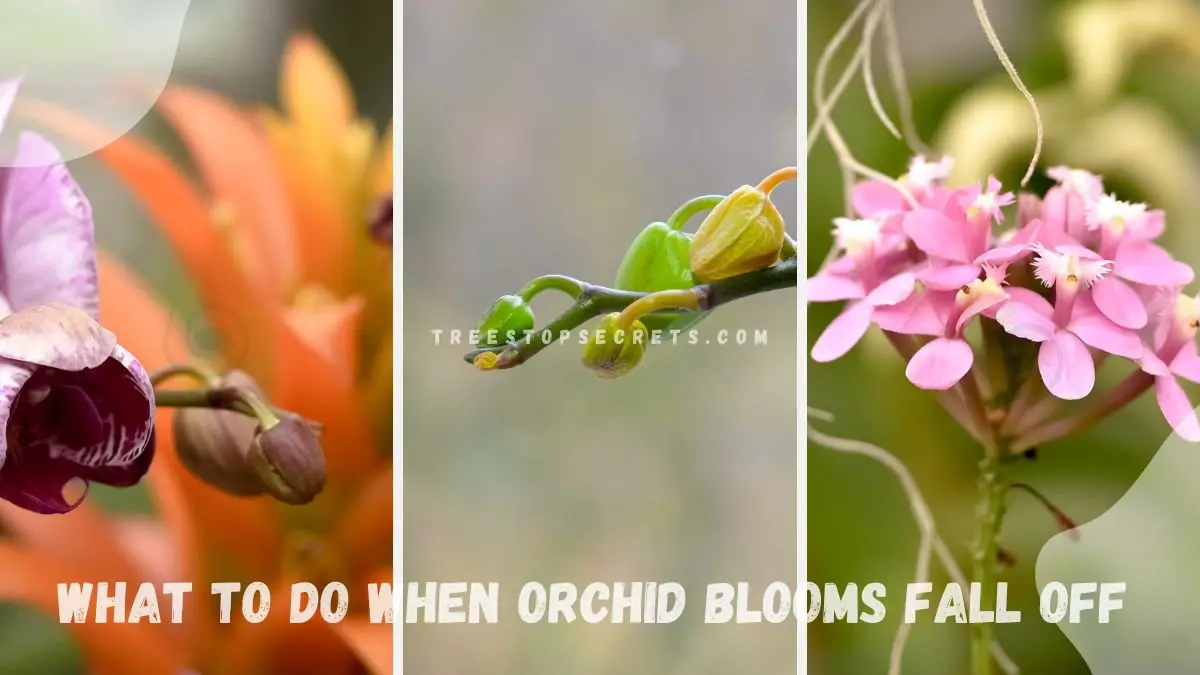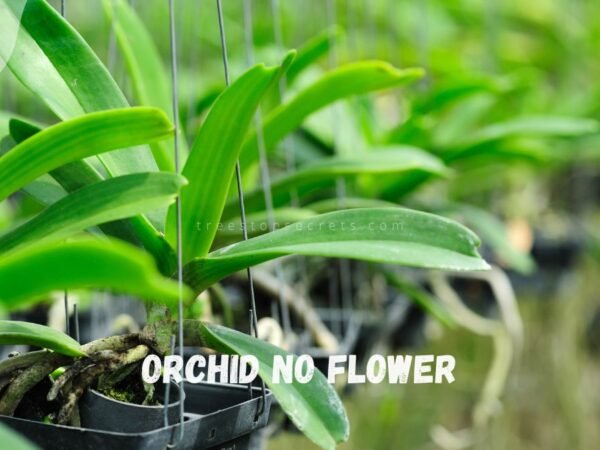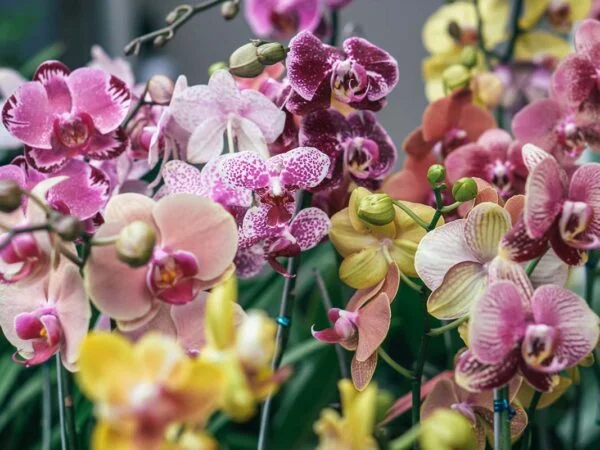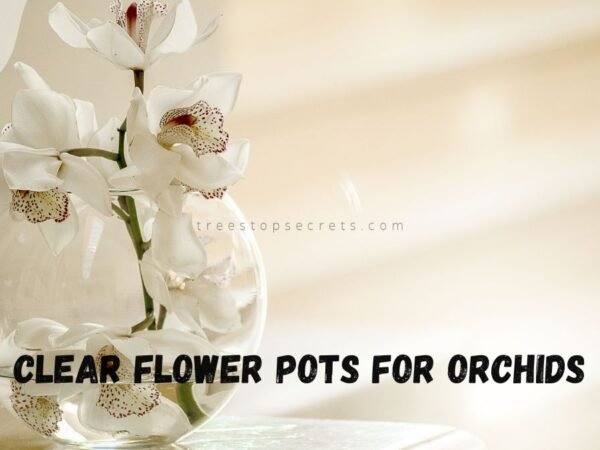When your orchid blooms drop, don't panic! It's a natural part of the plant's life cycle. To encourage new blooms, trim the spike above a node. Ensure your orchid gets enough light, water, and proper drainage. Use a balanced fertilizer to support healthy growth. If the roots are mushy or dry, repot your orchid in fresh medium. Keep an eye out for pests and diseases that could harm your plant.
Remember, successful orchid care involves patience and attention to detail. By following these steps, you can help your orchid thrive and bloom beautifully again.
Key Takeaways
- Understand the orchid life cycle to anticipate and care for blooms falling off.
- Take immediate steps after blooms fall by cutting the spike and adjusting care routine.
- Provide post-bloom care by focusing on light, water, and fertilization needs.
- Decide whether to prune based on the orchid's health and growth patterns.
- Encourage reblooming through proper care practices like temperature control.
- Avoid common mistakes like overwatering or neglecting orchid care routines.
Understanding Orchid Life Cycle
Bloom Cycle Basics
Orchids follow a specific blooming cycle, starting with the emergence of flower spikes from the plant. These spikes eventually develop buds that blossom into beautiful flowers. The blooming process can vary based on the orchid species, with some flowering multiple times a year while others bloom once annually.
Understanding the different stages of orchid blooming is essential for proper care. From the initial appearance of flower spikes to the gradual opening of buds and the eventual full bloom, each stage requires specific attention and care. By recognizing these stages, orchid owners can provide the necessary conditions for optimal growth and flowering.
Knowing how frequently orchids bloom is crucial for maintaining their health. While some orchids bloom once a year, others may produce flowers several times throughout the year. By understanding the blooming frequency of their orchids, owners can anticipate when to expect new blooms and adjust their care routine accordingly.
Reasons for Falling Blooms
Identifying common reasons behind falling blooms is essential for preserving orchid health. Factors such as overwatering, underwatering, inadequate light exposure, or sudden temperature changes can lead to premature flower dropping. By addressing these issues promptly, orchid owners can prevent further flower loss and promote overall plant well-being.
Exploring the factors contributing to premature flower dropping can help diagnose underlying issues in orchid care. Issues such as root rot, pest infestations, nutrient deficiencies, or improper watering techniques can impact bloom longevity. By addressing these factors early on, orchid owners can mitigate potential damage and support healthy bloom retention.
Understanding the influence of environmental conditions on bloom longevity is crucial for maintaining healthy orchids. Extreme temperatures, humidity levels, or drafts can stress orchids, leading to premature flower loss. By creating a stable environment with consistent temperature and humidity levels, orchid owners can prolong bloom life and ensure optimal plant health.
Immediate Steps After Blooms Fall
Inspect the Plant
After orchid blooms fall off, it's crucial to check the overall health of your plant. Look for signs of disease or pest infestation that may have been hidden by the flowers. Assess the root system to ensure it's healthy and intact.
Watering Needs
Adjust the watering frequency of your orchid once the blooms drop. Understanding the importance of proper watering is key to maintaining your orchid's health post-blooming. Learn how to avoid overwatering, which can lead to root rot and other issues.
Light Adjustment
Ensure your orchid gets adequate light after its blooms fall off. Position it in an area with the right light conditions for optimal growth. Avoid exposing your orchid to direct sunlight, as this can cause sunburn and damage delicate leaves.
Post-Bloom Care
Fertilizing Tips
Implement a fertilization schedule to provide essential nutrients for post-bloom orchids. Choose suitable orchid fertilizer rich in nitrogen, phosphorus, and potassium to support healthy growth. Understand the critical role of nutrients in promoting vibrant blooms and robust foliage.
Humidity and Temperature
Maintain optimal humidity levels between 50-70% to prevent dehydration in orchids. Monitor temperature conditions within the range of 65-80°F for optimal well-being. Create a humid and warm environment to mimic their natural habitat and encourage healthy growth.
Repotting Guide
Know when it's time to repot your orchid after blooming to refresh the growing medium. Select an appropriate potting mix like bark or sphagnum moss for repotting. Ensure gentle handling of roots during the repotting process to minimize stress on the plant.
To Prune or Not to Prune
Pruning Benefits
Pruning orchids after blooms fall off encourages new growth and improves overall plant health. By strategically cutting back spent stems, you stimulate the orchid to produce fresh blooms. Proper pruning also enhances the aesthetic appeal of your orchid by maintaining a tidy appearance.
When to Cut Spike
Knowing when to cut the flower spike on your orchid is crucial for promoting reblooming. Timing is key in ensuring the plant's energy is redirected towards new growth. By cutting the spike at the right moment, you increase the chances of your orchid flowering again in the future. Follow specific guidelines to make sure you are cutting the spike correctly.
Drawbacks of Not Pruning
Neglecting to prune your orchid post-bloom can have negative consequences on the plant's health. Failure to remove spent blooms and stems may lead to disease or pest infestations. Not pruning can also hinder new growth and result in a less vibrant and healthy orchid. Understanding the risks associated with skipping pruning is essential for maintaining your orchid's well-being.
Encouraging Reblooming
Spike Care
Proper care for the remaining spike is crucial post-bloom to support future blooming. Trim any dried or yellowed sections to maintain spike health. Avoid overwatering to prevent root rot and ensure proper drainage.
Maintaining the health of the spike involves monitoring its condition regularly. Provide adequate light and humidity levels for optimal growth. Apply a balanced orchid fertilizer to promote strong spike development.
To prevent issues from inadequate spike care, address any signs of distress promptly. Watch for yellowing leaves, which may indicate nutrient deficiencies. Treat pests like aphids or mealybugs immediately to safeguard the spike's health.
Timing for Reblooming
Understanding the typical timeframe for orchids to rebloom is essential for planning ahead. Most orchids require a rest period after blooming before initiating new flower spikes. This resting phase can last several weeks to a few months.
Factors influencing the reflowering process include light exposure and temperature variations. Mimic natural conditions by adjusting light levels and temperatures accordingly. Maintain consistent care routines to encourage reblooming at the right time.
Prepare your orchid for its next blooming cycle by providing optimal care throughout the rest period. Continue regular watering and fertilizing, adjusting as needed based on the orchid's response. Monitor growth closely for any changes indicating upcoming blooming.
Advanced Care Techniques
Exploring advanced care methods for orchids post-bloom can elevate your gardening skills. Consider repotting your orchid if it has outgrown its current container or if the media has broken down. Use a well-draining potting mix suitable for orchids.
Enhance your orchid care skills with specialized techniques like pruning old roots during repotting. Trim any dead roots to promote healthy growth and prevent disease spread. Utilize root hormone treatments to stimulate new root development.
Implement advanced strategies such as using rooting hormones when propagating orchids from cuttings. These hormones encourage root growth and increase the success rate of new plantings. Experiment with different propagation methods to find what works best for your orchids.
Common Mistakes to Avoid
Overwatering
Overwatering can lead to root rot, indicated by yellowing leaves and a foul odor from the roots. Prevent overwatering by allowing the top inch of soil to dry before watering again.
Understanding the risks of overwatering is crucial as it can suffocate the roots, leading to poor nutrient absorption and eventual plant death. Implement a proper watering schedule to prevent overwatering and promote healthy orchid growth.
To prevent overwatering and its negative effects, make sure your orchids are planted in well-draining pots and use a potting mix specifically designed for orchids. Avoid leaving standing water in the saucer beneath the pot.
Neglecting Light Needs
Neglecting the light requirements of orchids can hinder their growth and flowering capabilities. Orchids require adequate light exposure to thrive, with insufficient light causing weak, leggy growth.
Insufficient light exposure can result in poor blooming or no blooms at all. Place your orchids in a location where they receive indirect sunlight or artificial grow lights to ensure they get enough light for photosynthesis.
To ensure proper light conditions for orchid growth, rotate your plants occasionally to ensure even light distribution on all sides of the plant. Avoid placing them in direct sunlight for extended periods, as this can scorch their leaves.
Incorrect Pruning
Incorrect pruning techniques can harm your orchid's health and inhibit future blooming. Precision is key when pruning orchids to avoid damaging healthy parts of the plant.
Common mistakes when pruning include cutting too much foliage or cutting at the wrong angle, which can introduce diseases or slow down recovery. Prune only dead or damaged parts using sterilized tools to prevent infections.
Precision in pruning practices is essential for encouraging reblooming and maintaining the overall health of your orchids. Ensure you understand the specific pruning needs of your orchid species before attempting any trimming.
Frequently Asked Questions
Bloom Lifespan
Orchid blooms typically last several weeks, depending on the species and care provided. Factors like light, temperature, and humidity influence bloom longevity. Enjoy the exquisite beauty of orchid blooms while they grace your space.
Signs of Stress
After orchid blooms fall off, watch for signs of stress such as yellowing leaves or wilting stems. Address stress by adjusting light exposure and watering routine to aid in orchid recovery. Create a stress-free environment to support your orchid's health.
Reblooming Frequency
Orchids can rebloom once or multiple times a year, varying based on species and care. Factors like light levels, temperature fluctuations, and proper fertilization impact reblooming frequency. Plan ahead to ensure consistent blooming cycles for your orchids.
Summary
Understanding the orchid life cycle is crucial for providing proper care. After blooms fall, immediate action is needed to ensure your orchid thrives. Post-bloom care, pruning considerations, and techniques to encourage reblooming are all essential steps. Be cautious of common mistakes to avoid setbacks in your orchid's growth. Address any lingering questions you may have to become a proficient orchid caretaker.
Remember, your orchid's well-being depends on your knowledge and actions. Take the time to implement the tips provided to see your orchid flourish. By following these guidelines, you can enjoy a beautiful and healthy orchid for years to come.
Frequently Asked Questions
What causes orchid blooms to fall off prematurely?
Orchid blooms may fall off prematurely due to overwatering, inadequate light, extreme temperatures, or stress from changes in environment. Ensure proper care by maintaining consistent watering, providing adequate light, and avoiding sudden environmental changes.
How can I encourage my orchid to rebloom after the blooms fall off?
To encourage your orchid to rebloom, continue regular care routines such as appropriate watering, fertilizing, and providing optimal light conditions. Consider adjusting the temperature to mimic its natural environment and provide a period of rest to stimulate blooming.
Is it necessary to prune orchids after the blooms fall off?
Pruning orchids after the blooms fall off is not mandatory. You can trim the flower spike if it turns brown or dies completely. However, leaving the spike on can sometimes encourage reblooming. Monitor the plant's condition and prune only if necessary.
Should I repot my orchid after the blooms fall off?
Repotting an orchid after the blooms fall off is not immediately necessary unless the plant shows signs of root rot or overcrowding. If you do decide to repot, use a well-draining medium and ensure proper care post-repotting to minimize stress on the plant.
How often should I fertilize my orchid after its blooms fall off?
After your orchid's blooms fall off, you can continue fertilizing at a reduced frequency compared to during its blooming period. Use a balanced orchid fertilizer diluted to half-strength and apply it every 2-4 weeks during the plant's active growing season for optimal health and potential reblooming.
Image Source: Paid image from CANVA





